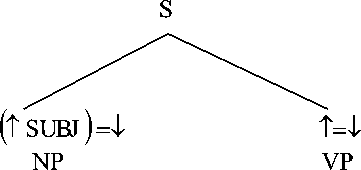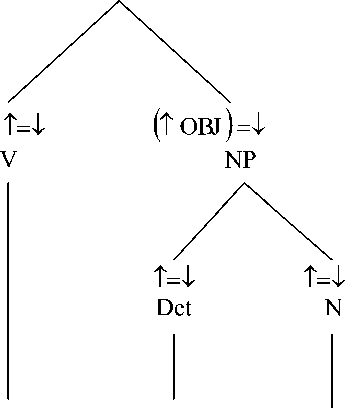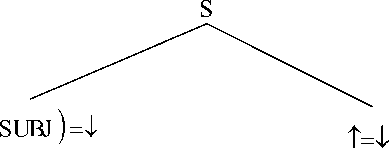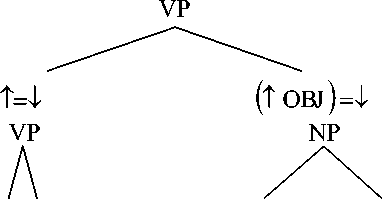Syntactic Functions of Deverbal Nouns Found in Huffington Post Website: Morphosyntactic Approach
on
ISSN: 2302-920X
Jurnal Humanis, Fakultas Ilmu Budaya Unud
Vol 19.1 Mei 2017:10-18
Syntactic Functions of Deverbal Nouns Found in Huffington Post Website: Morphosyntactic Approach
Made Dwi Yuniartati1*, I Nyoman Udayana2, I Nyoman Aryawibawa3 [123]English Department Faculty of Arts, Udayana University 1[dwiyuniartati@gmail.com] 2[nyomanudayana@yahoo.com] 3[inyoman.aryawibawa@gmail.com] *
Corresponding Author
Abstrak
Skripsi ini berjudul “Fungsi Sintaksis dari Kata Benda Deverbal pada Website Huffington Post dengan Pendekatan Morfosintaksis”. Tujuan dari penelitian ini adalah untuk menemukan akhiran nomina dan fungsi sintaksis dari kata benda deverbal. Data diambil dari website Huffington Post dengan menggunakan metode dokumentasi. Metode kualitatif digunakan untuk menganalisis data. Teori dari Quirk (1973) digunakan untuk menemukan akhiran nomina pada data. Teori Lexical Functional Grammar dari Falk (2001) dan Bresnan dkk (2016) digunakan untuk menganalisis fungsi sintaksis kata benda deverbal. Hasil penelitian ini menunjukkan akhiran nomina yang ditemukan adalah akhiran /-ation/, /-ment/, /-er/, /-or/, /-ant/, and /-age/.
Sedangkan fungsi dari kata deverbal yang ditemukan adalah sebagai subjek dan objek.
Kata kunci: fungsi sintaksis, kata benda deverbal, morfosintaksis
Linguistics has four branches of study: Phonology, Semantics, Morphology and Syntax. Matthews (1974:1) defined morphology as the study of forms of words. Beard (1995:1) stated that the key element of Morphology is the word. Syntax, unlike such components as phonetics or phonology, semantics, and pragmatics, is a system that is purely internal to language (Falk, 2001:1). Both of the studies can be combined into what is called as morphosyntax.
Basically nouns can be derived from other nouns, verbs and adjectivesby attaching nominal suffixes. It will fill a noun position. Nouns which are derived from verbs are called deverbal nouns. Verbs and nouns have different syntactic functions. Syntactic function of a noun sometimes is still misunderstood.
Deverbal nouns become the main discussion of this study because a noun is mostly derived from a verb. In learning a language, understanding about word classes is needed in order to reduce confusion. If someone does not know word class of a word it
will be hard to get the meaning of a sentence, particularly about deverbal noun and its syntactic function in a sentence because a word and its syntactic function cannot be separated. Therefore, syntactic function of a deverbal noun is important to learn.
Based on the background above, there were two problems formulated:
-
1. What nominal suffixes were found in Huffington Post website?
-
2. What were the syntactic functions of deverbal nouns found in Huffington Post website?
-
3. Aims of the Study
The aims of this study were:
-
1. To find out nominal suffixes found in Huffington Post website.
-
2. To find out the syntactic functions of deverbal nouns found in Huffington Post website.
-
4. Research Method
-
4.1 Data Source
-
This study used primary data as the data source. The data were taken fromHuffington Post website. The Huffington Post also called HuffPo or HuffPost, is an American news-and-commentary website. It was founded by Arianna Huffington, a political activist, in 2005. In 2011, The Huffington Post was not only available in the United States but the editions launched in Canada and the United Kingdom as well. In 2012, it was expanded in European countries such as France, Spain, and Italy. In the same year, the U.S. version of The Huffington Post was awarded Pulitzer Prize for the first time. The Huffington Post released their site as well; a weekly digital magazine that offers subscribers exclusive articles, including video clips and other multimedia. The reason why Huffington Post website was chosen as the data source was that there were sufficient data related to the study that could be found.
Documentation method was applied in this study. In collecting the data there were some steps. First, the website of Huffington Post at www.huffingtonpost.com was
accessed. Second, the articles in Huffington Post website were read intensively. Third, the sentences which contained deverbal nouns within the articles were copied. Fourth, the collected data were classified based on their suffix. Fifth, 14 data out from the 100 sentences found were selected.
The qualitative method was applied in this study with theory from Quirk, Falk and Bresnan et al. There were some steps in analyzing the data. First, the data were organized into a list to make it easier to be analyzed. Second, the deverbal nouns were separated from their suffixes to know the bases and the morphological process. It was done to know what suffixes were found in the data. Third, the data were analyzed to find out the syntactic function of the deverbal nouns.
The theory proposed by Quirk was applied to analyze the data. The data were taken from the data source.
-
1. ..UNICEF had made emergency preparations. (HuffPost, October 7th 2016)
The word typed in bold is deverbal noun. The morphological process is:

Prepare (V) + suffix /-ation/ = preparation (N)
The base of word preparation is prepare. The word prepare belongs to verb. It means getting or making something or somebody to be used to do something. Prepare occurs in mute –e. If a word ends in mute –e, then –e needs to be ommited because there is no meaning for prepareation. After being attached by suffix /-ation/, the word class changes from verb into noun. As noun, preparation means act
of getting ready for something or making something ready. Preparation is attached by suffix /-s/ which indicates that it is in plural form.
-
2. The government is putting private interest before the environment. (HuffPost, October 28th 2016)
The word typed in bold is deverbal noun. The morphological process is:

Govern (V) + suffix /-ment/ = government (N)
The base word of the word government is govern. It is verb class. As verb, govern means legally controlling and running a country, city; controlling or influencing somebody or something. After being attached by suffix /-ment/, the verb changes into noun. As noun, government means group of people who govern a country or state.
-
3. Organizers selected 45 artists... (HuffPost, October 4th 2016)
The word typed in bold in deverbal noun. The morphological process is:

Organize (V) + suffix /er/ = organizer (N)
Organizeris deverbal noun which derived from the verb organize. As verb, organize means making preparations for something; arranging into a particular structure of order. The attachment of suffix /-er/ changes the form from verb into
noun. As noun, organizer means aperson who arranges an event or activity. The attachment of suffix /-s/ indicates that organizers are in plural form.
-
4. They counsel other young war survivors...(HuffPost, October 7th 2016)
The word typed in bold is deverbal noun with morphological process:

Survive (V) + suffix /-or/ = survivor (N)
The base word of survivor is survive that belongs to verb. As verb, survive means continuing to live or existing longer than somebody or something. The attachment of suffix /-or/ creates the new word survivor. Survivor means a person who continues to live, despite almost being killed. The word survive appears in mute –e. If a word ends in a mute –e, then –e has to be omitted. It is done because survivevor has no meaning. Then,survivor is attached by suffix /-s/ and becomes survivors which show that the word is in plural form.
-
5. Fifty actors guide the participants through the experience. (HuffPost, October 10th 2016)
The word typed in bold is deverbal noun. The morphological process is:
Participants (N)
Participate (V) Suffix /-ant/
Participate (V) + suffix /-ant/ = participant (N)
The base word of participant is participate. It belongs to verb, which means taking part or becoming involved in an activity. The attachment of suffix /-ant/
changes the word particpate into noun participant. Participant means person who participate in something. Suffix /-s/ is attached to the word participant, indicating that it has plural form.
-
6. He saved my marriage...(HuffPost, October 11th 2016)
The word typed in bold is deverbal noun. The morpholoical process is:

Marry (V) + suffix /-age/ = marriage (N)
The base of the word marriage is marry. Marry belongs to verb. which means becoming the husband or wife of somebody; getting married to somebody; performing a ceremony in which a man and woman become husband and wife. After being attached by suffix /-age/ the word class changes from verb into noun, forming the word marriage. The word marriageis ended by /y/; however, through morphological process /y/ is changed by /i/. As noun, marriage means legal union of a man and woman as husband and wife.
The analysis of syntactic functions of deverbal nouns were analyzed using the Lexical Functional Grammar theory proposed by Falk (2001) in the book entitled Lexical-Functional Grammar: An Introduction to Parallel Constraint-Based Syntax and Bresnan et al. (2016) in the book entitled Lexical Functional Syntax. The syntactic functions of the deverbal nouns were analyzed with constituent structure and functional structure.
-
5.2.1 Deverbal noun functions as subject
1. Organizers selected 45 artists... (HuffPost, October 4th 2016)


N

45 artists
selected
Organizers
T PRED ) ='Organizer'
↑ DEF )= -
;↑ NUM) = PL
(↑ PRED ) =' select (↑ PRED ) =' artist'
((↑ SUBJ )(↑ OBJ ))' (↑ DEF) = -(↑ TENSE)= PAST (↑ num )= pl
The functional structure is:
PRED 'select SUBJ, OBJ ' TENSE PAST
PRED 'organizer'
SUBJ DEF -NUM PL ^PRED 'artist'"
OBJ DEF -
NUM PL
The sentence Organizers selected 45 artists consists of subject, predicate and object. The subject is the noun ‘organizers’. The predicate is the verb ‘selected’. The
object is the noun phrase ’45 artists’, formed of the determiner ‘45’ and the noun ‘artists’. The noun ‘artists’ becomes the head of the phrase, while the determiner ‘45’ is modifier; therefore, it belongs to noun phrase.
-
5.2.1 Deverbal noun functions object
-
1. ...UNICEF had made emergency preparations. (HuffPost, October 7th 2016)

NP

N

Φ∈ (↑ ADJ) ↑=Φ
Adj N
UNICEF
(↑ PRED ) =
' UNICEF'
(↑ NUM ) = SG
had made
(↑ PRED ) =
'make
((↑ SUBJ )(↑ OBJ))
(↑ TENSE ) =
PAST
emergency
↑ PRED) = 'preparation'
'↑ def) = -
↑NUM ) = PL
↑ ADJ PRED ) ='emergency'
preparations
The functional structure of the sentence is:
PRED 'make SUBJ, OBJ '
TENSE PAST
SUBJ
OBJ
PRED 'UNICEF'
NUM SG
PRED 'preparation'
DEF -
NUM PL
ADJ {[PRED 'emergency']}
The sentence UNICEF had made emergency preparations consists of subject, predicate and object. The noun ‘UNICEF’ is the subject. The verb phrase ‘had made’ is predicate, which is formed of the auxiliary ‘had’ and the verb ‘made’, the verb ‘made’ as head of the phrase. The noun phrase ‘emergency preparations’ is object, formed of the adjective ‘emergency’ and the noun ‘preparations’. The word ‘emergency’ modifies the head, ‘preparations’. It is a noun phrase because the phrase is headed by noun.
6.Conclusion
After analyzing sentences that contained deverbal nouns based on the data source, including the analysis of morphological process to find out the suffix of the word and the syntactic functions of deverbal nouns, it can be concluded that:
First, from nine suffixes that form noun from verb according to Quirk, not all of the suffixes were found in the data source. The suffixes in the data source were suffixes /-ation/, /-ment/, /-er/, /-or/, /-ant/, and /-age/. Besides, the attachment of suffix into the base of the word changes the word class and meaning of the word as well.Second, from ten syntactic functions stated by Bresnan et al., the syntactic functions of deverbal nouns found in the data source were as subject and object. It could be found by analyzing the data through Lexical Functional Grammar using the constituent structure and functional structure.
7. Bibliography
Beard, Robert. 1995. Lexeme Morpheme Base Morphology. USA: State University of New York Press.
Bresnan, Joan, et al. 2016. Lexical-Functional Syntax, Second edition. UK: Blackwell Publishers Ltd.
Falk, Yehuda N. 2001. Lexical-Functional Grammar: An Introduction to Parallel Constraint-Based Syntax. Stanford: CSLI Publications.
Huffington Post online: available from www.huffingtonpost.com (accessed on October 2016)
Matthews, P.H. 1974. Morphology, Second edition. New York: Cambridge University Press.
Quirk, Randolph and Sidney Greenbaum. 1976. A University Grammar of English. London: Longman.
18
Discussion and feedback